
No. 206 Squadron is a Test and Evaluation Squadron of the Royal Air Force. Until 2005 it was employed in the maritime patrol role with the Nimrod MR.2 at RAF Kinloss, Moray. It was announced in December 2004 that 206 Squadron would disband on 1 April 2005, with half of its crews being redistributed to Nos. 120 and 201 Squadrons, also stationed at Kinloss. This was a part of the UK Defence Review called Delivering Security in a Changing World; the Nimrod MR.2 fleet was reduced in number from 21 to 16 as a consequence.

Number 23 Squadron is a squadron of the Royal Air Force responsible for 'day-to-day space operations', having been reformed in January 2021, as the first "space squadron". Up until its disbandment in October 2009, it operated the Boeing Sentry AEW1 Airborne Warning And Control System (AWACS) aircraft from RAF Waddington, Lincolnshire.

No. 1435 Flight is a Eurofighter Typhoon FGR.4 unit of the Royal Air Force, based at RAF Mount Pleasant, providing air defence for the Falkland Islands, South Georgia and the South Sandwich Islands. Permanently based in the islands, the aircrew and groundcrew from the UK are cycled through No. 1435 Flight, providing a 365-day, 24-hour alert.

Number 1 Squadron, also known as No. 1 (Fighter) Squadron, is a squadron of the Royal Air Force. It was the first squadron to fly a VTOL aircraft. It currently operates Eurofighter Typhoon aircraft from RAF Lossiemouth.

Number 3 Squadron, also known as No. 3 (Fighter) Squadron, of the Royal Air Force operates the Eurofighter Typhoon FGR.4 from RAF Coningsby, Lincolnshire, since reforming on 1 April 2006. It was first formed on 13 May 1912 as one of the first squadrons of the Royal Flying Corps – being the first to fly heavier than air aircraft.

Number 4 Squadron, normally written as No. IV Squadron, is a squadron of the Royal Air Force. Since November 2011, it has operated the BAE Hawk T2 from RAF Valley, Anglesey, Wales. The squadron provides weapons and tactics training for student pilots after they have completed their conversion to jet aircraft with No. XXV(F) Squadron. Between 1970 and January 2011, No. IV Squadron operated various marks of the Hawker Siddeley Harrier and British Aerospace Harrier II.
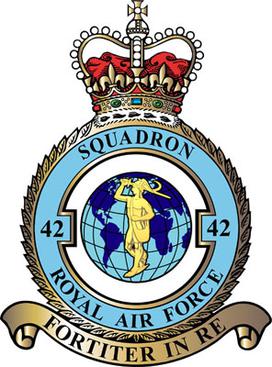
Number 42 Squadron was a squadron of the Royal Air Force. It served during the First World War as an army co-operation squadron and during the Second World War in various roles. Between 1992 and 2010, it was the Operational Conversion Unit (OCU) for the Hawker Siddeley Nimrod MR.2, based at RAF Kinloss, Moray, until the Nimrod MR.2's retirement in March 2010. No. 42 Squadron disbanded on 26 May 2011.
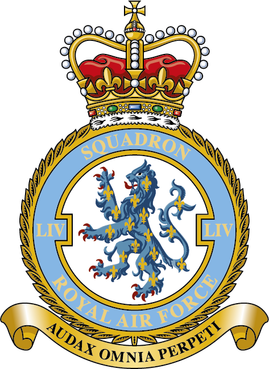
Number 54 Squadron is a squadron of the Royal Air Force based at RAF Waddington, Lincolnshire. On 1 September 2005, it took on the role of Intelligence, Surveillance and Reconnaissance (ISR) Operational Conversion Unit, and is now the Advanced Air ISTAR Academy, responsible for training all RAF crews assigned to the MQ-9A Reaper, Protector RG1 (MQ-9B), Shadow R1/R2, RC-135W Rivet Joint and Poseidon MRA1. It also controls the RAF ISR Warfare School (ISRWS) who run the Qualified Weapons Instructor Intelligence, Surveillance and Reconnaissance and QWI Reaper Courses.

No. 220 Squadron of the Royal Air Force (RAF) was founded in 1918 and disbanded in 1963 after four separate periods of service. The squadron saw service in both the First and Second World Wars, as a maritime patrol unit, and finally as part of Britain's strategic nuclear deterrent.
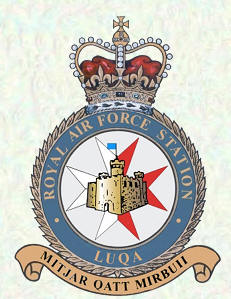
Royal Air Force Luqa is a former Royal Air Force station located on the island of Malta, now developed into the Malta International Airport.

No 208 (Reserve) Squadron was a reserve unit of the Royal Air Force, most recently based at RAF Valley, Anglesey, Wales. It operated the BAe Hawk aircraft, as a part of No. 4 Flying Training School. Due to obsolescence of its Hawk T.1 aircraft compared to the new-build Hawk T.2 aircraft of its sister unit, 4(R) Sqn, the squadron was disbanded in April 2016, in its 100th year of operations.

No. 683 Squadron RAF was a photo-reconnaissance squadron of the Royal Air Force during the Second World War and from August 1950 to November 1953.

No. 205 Squadron was a Royal Air Force unit formed on 1 April 1918. Prior to this it had existed as No. 5 Squadron of the Royal Naval Air Service (RNAS). In 1929, it became the first RAF squadron to be permanently based in Singapore, taking as its motto Pertama di Malaya. No. 205 Squadron operated during the Second World War and the Cold War before disbanding on 31 October 1971.
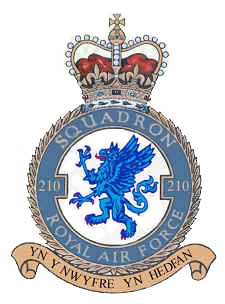
No. 210 Squadron was a Royal Air Force unit established in the First World War. Disbanded and reformed a number of times in the ensuing years, it operated as a fighter squadron during the First World War and as a maritime patrol squadron during the Spanish Civil War, the Second World War and the Cold War before it was last deactivated in 1971.
No. 204 Squadron was a Royal Air Force unit first formed in March 1915 as No.4 Squadron Royal Naval Air Service.

No. 18 Group of the Royal Air Force was a group active from 1918 to 1919, and from 1938 to 1996.
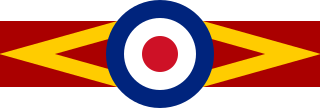
No. 80 Squadron RAF was a Royal Flying Corps and Royal Air Force squadron active from 1917 until 1969. It was operative during both World War I and World War II.
No. 234 Squadron RAF had a long career within the RAF, being operational on flying boats in World War I and on fighter aircraft in World War II. After the war it remained a fighter unit till 1957. In its last incarnation the squadron was in turn Operational Training Unit (OTU), Tactical Weapon Unit (TWU) and part of No. 4 Flying Training School RAF until finally disbanded in 1994.
No. 612 Squadron RAF was originally formed in 1937 as an Army Co-operation unit, and flew during the Second World War in the General Reconnaissance role. After the war the squadron was reformed and flew in the Day Fighter role until disbanded in 1957. At present the squadron has a non-flying role as a RAF Medical Reserves unit.

















